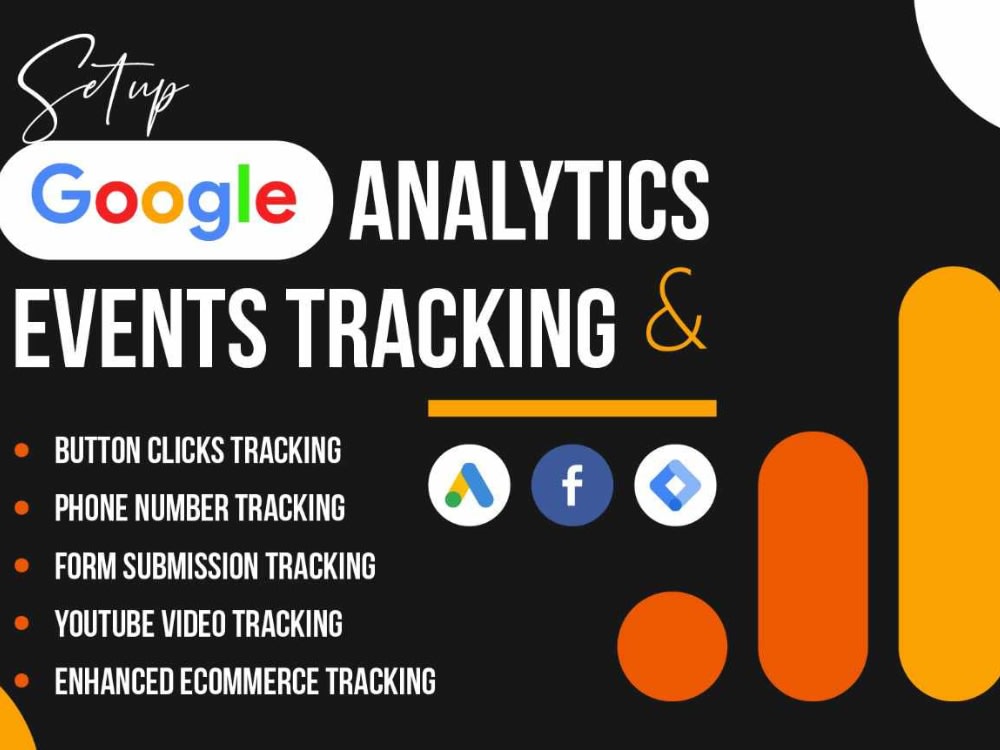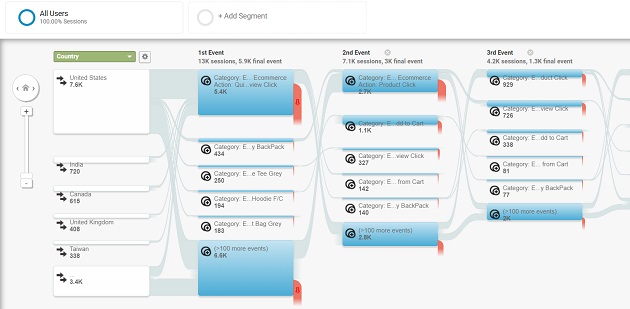Google Analytics Event Tracking for Beginners
Table of ContentsThe Single Strategy To Use For Google Analytics Event TrackingGoogle Analytics Event Tracking Can Be Fun For AnyoneThe Google Analytics Event Tracking PDFsThe smart Trick of Google Analytics Event Tracking That Nobody is Talking AboutGoogle Analytics Event Tracking Things To Know Before You Get ThisThe Ultimate Guide To Google Analytics Event Tracking

If you're mosting likely to set up occasion tracking by hand, after that you're mosting likely to have to include some extra code to the aspects you intend to collect data from. The code you're mosting likely to deal with will look something similar to this: There are four elements within that code fragment that you're going to need to specify on your own: event, Classification, occasion, Action, event, Tag and occasion, Value.
As you can see, two of these are needed (group and action) while label and worth are optional. It all depends upon the sort of details you want relayed back to Google Analytics when an individual clicks the specified element (Google Analytics Event Tracking). It will be a lot easier to specify these parts if you evaluate your site and make a decision which elements/actions you wish to track
The 10-Second Trick For Google Analytics Event Tracking
Now, you'll be asked to define the and and you'll wish to select from the drop-down menu that appears when you click on. This will certainly raise the exact same event tracking components we checked out earlier, which you'll need to complete. When you've defined these, you can relocate to the second box and select the trigger that will fire your tag.
On the following display, you'll likewise have a field for naming your trigger and, if you click on package, you'll see a checklist of the various triggers you can choose. In this situation, we wish to select and after that choose the choice below. Then you'll establish the trigger to just discharge when an aspect is clicked with an URL that includes the.
Basic - Event monitoring! Occasion monitoring gives you a photo of just how users engage with your web site and business. Check out on as we check out every little thing you need to understand, including what it is, why you must track occasions, how to handle occasions data, and other pertinent FAQs you may have.
4 Simple Techniques For Google Analytics Event Tracking
You can change in between your occasion classifications, activities, and tags in the Top Events report. This report is important for digging even more into research on a details occasion classification. The Event Pages report presents the web pages where events are set off. In this section, we can examine the leading pages that drive events.
Events in published here Google Analytics have four primary elements. Google Analytics makes use of these codes to track individual communications and group them right into occasion reports (Google Analytics Event Tracking).
A list of the specifications you can track on your internet site is on the. After checking all needed areas, you can click check here "X" to close the home window and return to the Overview food selection on the.
The Basic Principles Of Google Analytics Event Tracking
Choosing "False" will stop that session from being a bounce. If you have not done so, you might require to establish a variable in the Google Analytics Setups box. Click "New Variable ..." if you can not discover one to select. Hereafter, enter your GA monitoring ID in the Tracking ID field.
Your ID will be on top of the screen. To their explanation do this, follow the following collection of activities: After configuring the fields, pick the "Triggering" area. When configuring your brand-new trigger, click the "+" switch, then the "pencil" switch, then choose your trigger kind. Tag your trigger and define the conditions that bring about cause firing.
Facts About Google Analytics Event Tracking Revealed

When it comes to recognizing which areas and elements are leading clients with your conversion channel, you still won't understand. So, without occasion monitoring, GA records will only count brows through as single-page sessions, also if users spend a great deal of time on one page and involve with it significantly (and a bounce).
How does occasion tracking accomplish this?Single-page sessions recognized as bounces start and conclude on the very same page. Without occasion tracking, GA will certainly identify a user's see as a bounce if they do not navigate to another page, no matter how they communicate with it. A video-rich page can have a higher bounce rate if events are not tracked.
Getting My Google Analytics Event Tracking To Work
Nevertheless, for GA to take event hits into account when measuring bounce rates, you must select "Non-interaction occasion" as "False" throughout the GTM setup. Establishing "event objectives" with event action is a superb means to track individual activities you value highly, such as new lead submissions or click a contact us to activity.